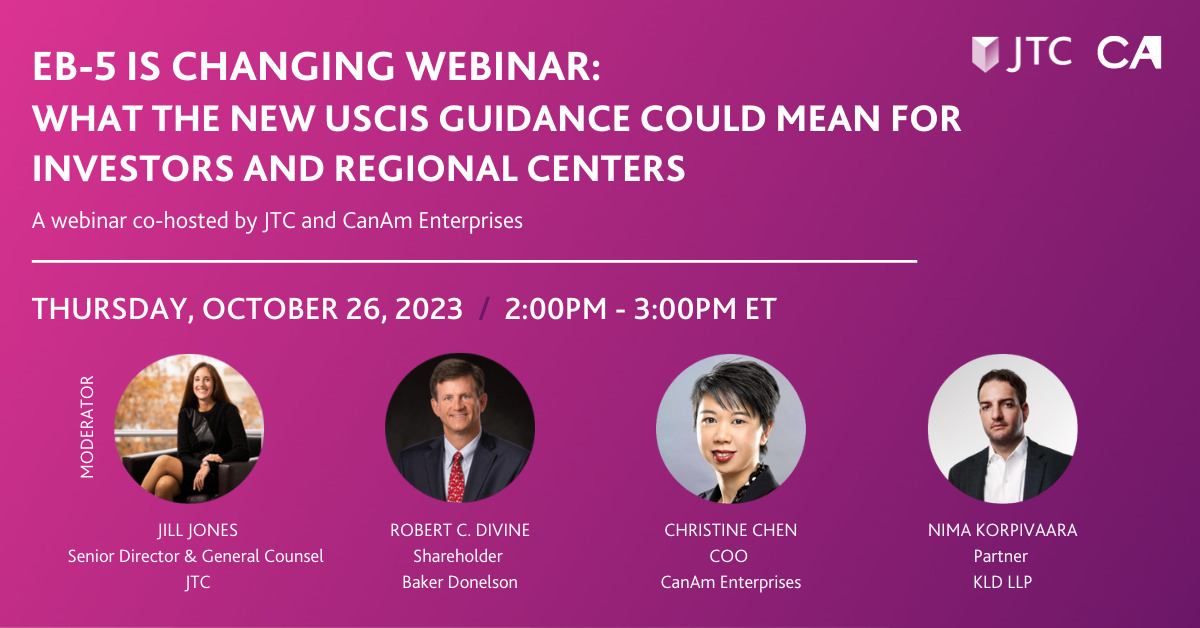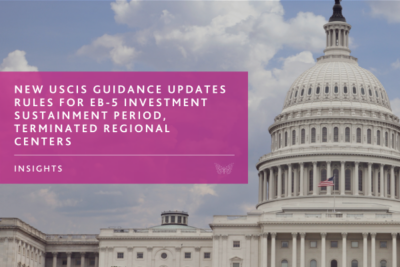For many international students, studying in the United States under an F-1 visa is a major stepping stone—one that opens doors to world-class education and the possibility of professional advancement. Yet, despite the promise, the F-1 visa often leaves graduates navigating a complex and uncertain future. In light of recent developments and growing concerns around F-1 visa policies, it’s worth considering an alternative path that offers more certainty and control: the EB-5 Immigrant Investor Program.
While the two visas serve different initial purposes—one academic and the other investment-based—they often intersect at a critical juncture: the desire to remain in the U.S. long-term. Here’s how the F-1 and EB-5 visas compare—and why more individuals are exploring EB-5 as a viable option for securing permanent residency and long-term opportunity in the U.S.

Read more: Why EB-5 Can Offer More Protection Than F-1: Navigating Uncertainty with Confidence
Understanding the F-1 Visa
The F-1 visa is designed for full-time international students enrolled in academic or language training programs at U.S. institutions. It is a non-immigrant visa that allows foreign nationals to live in the U.S. for the duration of their studies, with limited work options and no direct path to a green card.
Key Features of the F-1 Visa:
- Eligibility: Requires enrollment in a U.S. institution, proof of financial support, and a valid SEVIS record.
- Work Authorization: Limited to on-campus employment during studies and off-campus work through Curricular Practical Training (CPT) or Optional Practical Training (OPT), which must be related to the field of study.
- Duration: Covers the length of the academic program plus a 60-day grace period post-completion.
- Post-Graduation Options: Many F-1 visa holders attempt to transition to an H-1B visa for employment—but this route is constrained by visa caps, lottery selection, and green card backlogs.
Challenges:
- Visa Uncertainty: Renewal hurdles and dependence on academic status make travel and long-term planning difficult.
- Career Unpredictability: Graduates are often dependent on securing an H-1B visa to remain employed in the U.S.—a process fraught with unpredictability due to the annual lottery system.
- Limited Autonomy: F-1 visa holders cannot self-petition for permanent residency and must rely on employer sponsorship or other visa transitions.
While the F-1 visa remains a valuable tool for accessing U.S. education, these constraints have led many to reevaluate its suitability as a bridge to a stable future.
Why Consider the EB-5 Visa?
The EB-5 Immigrant Investor Program offers a fundamentally different approach—one that allows foreign nationals to invest in the U.S. economy in exchange for lawful permanent residency. Unlike the F-1 visa, EB-5 provides a direct path to a green card and full access to the rights and benefits of permanent residents.
Key Features of the EB-5 Visa:
- Eligibility: Requires an investment of $800,000 in a government-designated Targeted Employment Area (TEA) or $1.05 million in other areas, resulting in the creation of at least 10 full-time U.S. jobs.
- Self-Sponsorship: No employer, school, or family sponsorship is required—putting applicants in control of their immigration process.
- Unrestricted Work & Study: EB-5 investors and their qualifying family members (spouse and unmarried children under 21) can live, work, and study anywhere in the U.S., without the limitations imposed by non-immigrant visas.
- Concurrent Filing Benefits: For individuals already in the U.S. under a different visa, including F-1, the EB-5 program allows for concurrent filing—meaning applicants can apply for work authorization and travel permits while their green card application is pending.
Advantages over F-1:
- Permanent Residency: EB-5 directly results in a green card, offering long-term security and a pathway to U.S. citizenship.
- No Lottery or Employer Dependence: Eliminates the uncertainty of the H-1B visa lottery and the risk of losing status due to job loss or academic changes.
- Greater Freedom: EB-5 green card holders are not tied to a specific job, employer, or field of study, making it easier to pursue evolving personal and professional goals.
F-1 vs. EB-5 at a Glance
| Feature | F-1 Visa | EB-5 Visa |
| Purpose | Academic study | Investment for permanent residency |
| Work Authorization | Limited (CPT/OPT only) | Unrestricted after green card |
| Sponsorship Required | Academic institution | None (self-petitioned) |
| Green Card Path | Indirect via H-1B/employer | Direct path to permanent residency |
| Duration | Duration of study + 60 days | Conditional green card in ~2 years |
| Travel/Status Risks | High (dependent on school/OPT) | Low (green card offers stability) |
| Family Inclusion | Spouse/children cannot work easily | Spouse can work; children can study |
Read more about the L-1A, H-1B, and F-1 Visas comparison to EB-5
Why Now?
With increased scrutiny and shifting policies surrounding F-1 visas, many international students and their families are seeking greater clarity and security for their future. While the F-1 visa provides a crucial entry point to the U.S., its limitations have become more apparent—especially at a time when long-term planning is essential.
The EB-5 visa offers an alternative that is not only strategic but empowering. By investing in the future—both your own and America’s—EB-5 opens a door to life in the U.S. with stability, flexibility, and independence.
Final Thoughts
Choosing between the F-1 and EB-5 visa pathways depends on your long-term goals. If your objective is solely academic, the F-1 visa may suffice. But if your vision includes living, working, and building a future in the U.S., the EB-5 visa presents a compelling and proactive solution.
For families and students evaluating their next move, the EB-5 program may provide the peace of mind that comes with a secure foothold in the United States—an increasingly important consideration in today’s environment. As always, it is recommended to consult with qualified immigration professionals to assess your options and chart the best path forward.
Contact us to learn more about EB-5 visa program
Dive Deeper Into EB-5:




